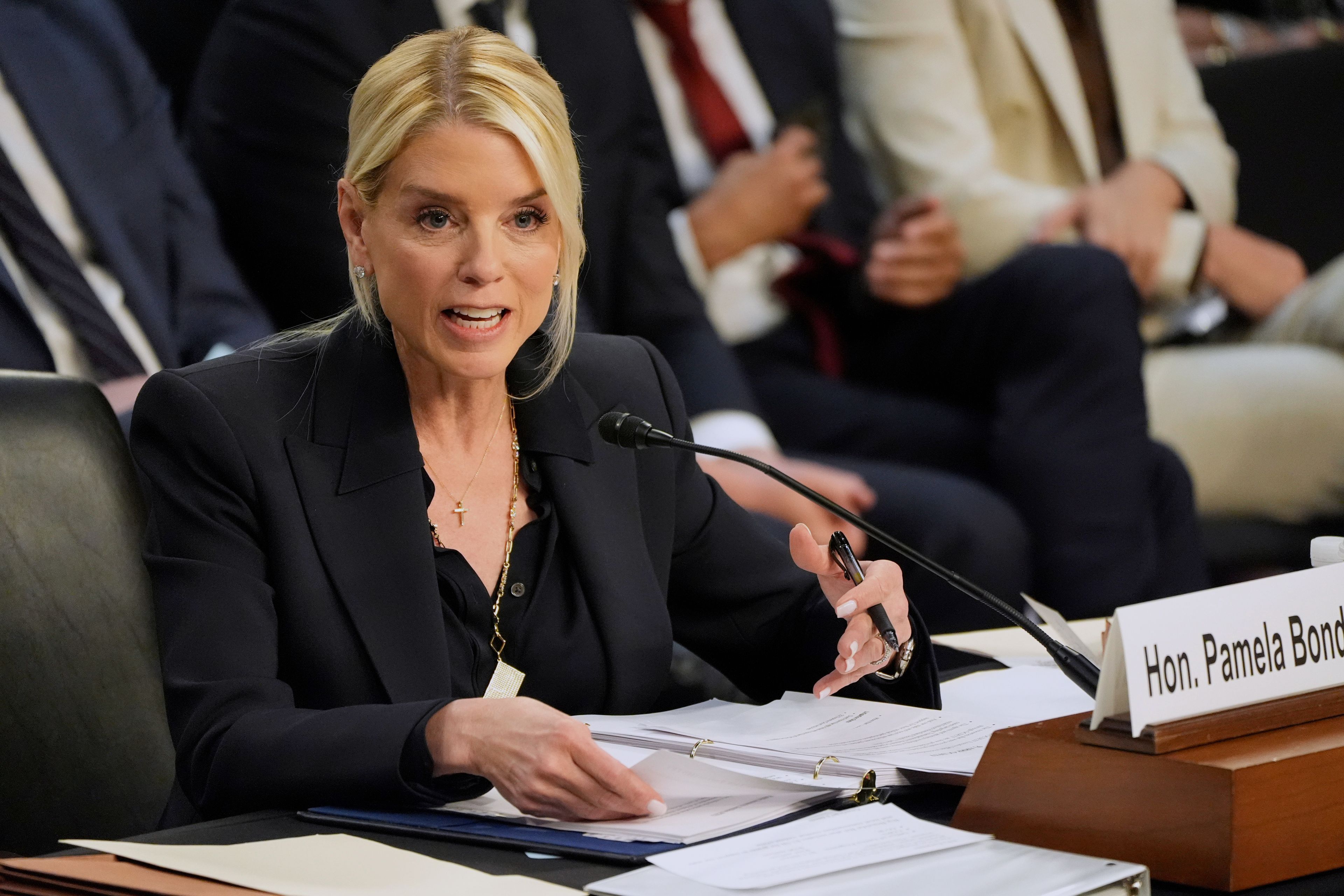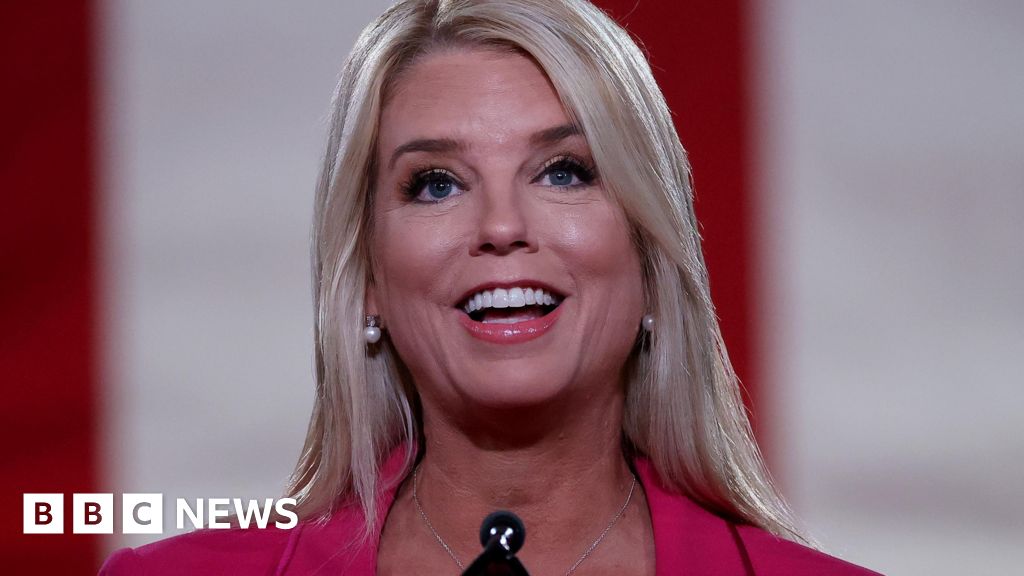In the increasingly fractious landscape of American politics, Attorney General Pam Bondi has launched a new initiative aimed at addressing what her office calls “political violence.” Her announcement includes expanded deployment of federal resources, new task forces, and an executive memorandum linking political threats to domestic terrorism. But the contours, scope, and legal boundaries of her plan remain under intense debate. This article investigates what Bondi is proposing, how it fits into her broader Department of Justice (DOJ) agenda, and where critics warn of overreach and potential constitutional conflict.

In late September 2025, Bondi issued a DOJ memorandum titled Ending Political Violence Against ICE,” tied to a broader presidential directive—NSPM‑7 (National Security Presidential Memorandum 7)—focused on countering domestic terrorism and organized political violence.
The memo orders Joint Terrorism Task Forces (JTTFs) nationwide to “actively investigate and disrupt entities and individuals engaged in acts of domestic terrorism, including repeated acts of violence and obstruction against federal agents.”
Bondi further directed the deployment of DOJ agents to Immigration and Customs Enforcement (ICE) facilities across the country following a fatal shooting at an ICE office in Dallas. The move was framed as necessary to protect federal facilities and staff from increasingly frequent threats.
In Bondi’s public statements, she has described the current moment as a “new era of political violence” in which protest, intimidation, harassment, and targeted aggression are no longer isolated incidents but a recurring risk requiring federal intervention.
Crackdown on Antifa / leftist activism
Bondi has also made strong statements targeting Antifa. She and FBI Director Kash Patel promised an “intensified crackdown” on what they describe as “rioting violence” by leftist groups, accusing Antifa of violence against law enforcement and funding networks that sustain such groups.
Bondi has used rhetorical framing suggesting that some forms of protest have crossed into anarchic violence and that federal law enforcement must treat them accordingly.

Reprioritization and policy shifts
Bondi’s approaches to political violence are part of a wider shift at DOJ under her leadership:
Weaponization Working Group: On her first day, she instituted a “Weaponization Working Group” to review cases from previous administrations for perceived prosecutorial bias or political influence.
Reshaping enforcement priorities: She is redirecting DOJ resources toward violent crime, terrorism, and federal protection goals, while curtailing or restructuring other programs—such as DOJ’s foreign influence task force and FARA enforcement.
Ending federal funding to sanctuary cities and pursuing litigation against jurisdictions alleged to obstruct federal enforcement.
Bondi frames these moves as restoring the DOJ to its core mission—protecting citizens and enforcing law and order—rather than serving as a political instrument.
Bondi’s announcements do not occur in isolation. They build on political, legal, and social shifts that shape her framing and approach.
Escalating social polarization and threatsThe U.S. has seen increasing instances of politically motivated threats, harassment of elected officials, and violence at protests. Bondi and allies portray this as evidence that political activism itself has transformed into violent extremism.
Trump administration prioritiesBondi’s agenda aligns closely with President Trump’s domestic security posture, especially the use of executive directives like NSPM‑7 to expand definitions of domestic terrorism and political violence.
Pushback against perceived witch huntsBondi has repeatedly framed prior DOJ actions under the Biden-era as overpoliticized or weaponized. Her political violence agenda partly signals a new paradigm: that DOJ must now act aggressively to protect the federal apparatus rather than target political opponents.
Legal reinterpretation and enforcement confidenceHer move to put DOJ agents at ICE sites and task federal resources against domestic threats suggests expanded legal assertiveness—and confidence in DOJ’s ability to push boundaries or set new precedent.

Critiques, Risks & Constitutional Questions
Bondi’s plan is ambitious, but critics raise serious concerns about civil liberties, ambiguity, and selective enforcement.
Vagueness and chilling effect
The terms political violence,” “obstruction,” and repeated acts” are broad and potentially vague. Critics warn that vague definitions can chill protected speech and protest under the First Amendment.
Targeting Antifa or specific ideologies while exempting others introduces subjectivity. Who decides what becomes “political violence” and what remains lawful dissent?
Overlap with protected speech
Bondi has made statements suggesting DOJ will prosecute “hate speech” or threats. But hate speech per se is protected speech unless it crosses into true threats, incitement, or violence. Some commentators have already criticized her for blurring this line.
Using the machinery of national security and terrorism investigations against domestic actors raises concerns about misuse and escalation.

Selectivity and potential political weaponization
Bondi’s critics point out that her rhetoric and enforcement may disproportionately target left‑wing groups (e.g. Antifa), raising questions of political bias and imbalance.
Her prior establishment of the Weaponization Working Group already stirred controversy as a mechanism to review and possibly un-do prosecutions against Trump’s critics.The alignment of her political violence agenda with the Trump administration’s broader legal strategy invites scrutiny: is this policing, or is it legalized political warfare?
Federal vs state jurisdiction tensions
Many protest and political violence incidents fall under state or local jurisdiction. DOJ’s expanded role may strain federalism norms, raising jurisdictional disputes.
Disputes may emerge over how far the DOJ can intervene in local protests, campus activities, or municipal governance.
Constitutional constraints and oversight
DOJ actions must still respect due process, checks and balances, and constitutional protections. Any misuse could provoke court challenges, judicial restraint, or legislative pushback.
Congressional oversight and civil liberties groups are likely to challenge overbroad applications or misuse of federal resources.
Evidence & Uncertainties to Watch
For Bondi’s initiative to be more than rhetoric, certain markers will be key:
Public cases and prosecutionsWill she or DOJ bring new criminal cases against individuals for “political violence” under these new directives? Who will be the first targets? How will courts respond?
Definitions and guidelinesDOJ should publish memos, guidelines, or rulebooks that clarify the definitions, threshold evidence, and procedural guardrails.
Oversight and transparencyCongressional hearings, inspector general reports, or independent audits may reveal whether the policy is applied uniformly or selectively.
Judicial challengesExpect lawsuits testing whether DOJ actions infringe First Amendment rights, exceed federal authority, or rely on vague statutory interpretations.

Political backlash and resistanceState or municipal governments, civil liberties groups, or activist organizations may resist or defy enforcement in areas they see as overreach.
Impact on protest behavior and public dissentWill citizens curb speech, demonstrations, or activism due to fear of federal retaliation?
Tentative Assessment
Pam Bondi’s announcement to combat political violence is bold and wide-ranging. It signals a shift toward re-militarizing internal political conflicts and treating ideological or protest acts more like national security threats.
If implemented carefully and evenhandedly, the initiative could deter threats to federal agents, curb violent extremism, and close accountability gaps. But if applied unevenly, ambiguously, or politically, it risks chilling free expression, political targeting, and constitutional crisis.
